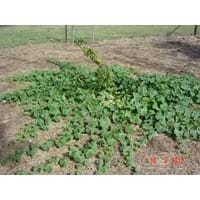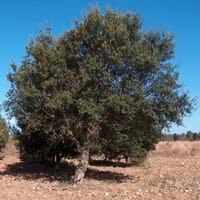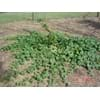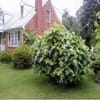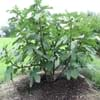Life Span
Annual
Perennial
Origin
Middle Africa, Southern Africa
China
Types
Not Available
Not Available
Habitat
Low Elevation, Woodlands
Hills, Lower slopes, open Woodlands
USDA Hardiness Zone
Not Available
4-8
Sunset Zone
H1, H2, 1a, 1b, 2a, 2b, 3a, 3b, 4, 5, 6, 7, 8, 9, 10, 11, 12, 13, 14, 15, 16, 17, 18, 19, 20, 21, 22, 23, 24
A3, 1a, 1b, 2a, 2b, 3a, 3b, 4, 5, 6, 7, 8, 9, 14, 15, 16, 17, 18, 19, 20, 21
Habit
Vining/Climbing
Upright/Erect
Minimum Width
Not Available
Flower Color
Lemon yellow
Light Green
Flower Color Modifier
Bicolor
Not Available
Fruit Color
Green, Orange, Light Green, Dark Green, Orange Red
Brown, Light Green, Lime Green
Leaf Color in Spring
Green
Green, Light Green
Leaf Color in Summer
Green
Green, Light Green
Leaf Color in Fall
Green
Red
Leaf Color in Winter
Light Green
Not Available
Leaf Shape
Heart-shaped
Lobed
Plant Season
Summer, Fall
Spring, Summer, Fall, Winter
Sunlight
Full Sun, Partial Sun
Full Sun, Partial Sun, Partial shade
Growth Rate
Very Fast
Medium
Type of Soil
Loam
Clay, Loam, Sand
The pH of Soil
Neutral, Alkaline
Acidic, Neutral, Alkaline
Soil Drainage
Well drained
Well drained
Bloom Time
Indeterminate
Late Spring, Early Summer
Tolerances
Drought
Drought, Salt
Where to Plant?
Ground
Ground, Pot
How to Plant?
reseeds, Seedlings
Seedlings
Plant Maintenance
Medium
Low
Watering Requirements
Do not water excessively
Average Water Needs, Requires regular watering, Requires watering in the growing season
In Summer
Lots of watering
Lots of watering
In Spring
Moderate
Moderate
In Winter
Average Water
Average Water
Soil pH
Neutral, Alkaline
Acidic, Neutral, Alkaline
Soil Type
Loam
Clay, Loam, Sand
Soil Drainage Capacity
Well drained
Well drained
Sun Exposure
Full Sun, Partial Sun
Full Sun, Partial Sun, Partial shade
Pruning
Remove damaged leaves, Remove dead branches, Remove dead leaves
Not Available
Fertilizers
All-Purpose Liquid Fertilizer
No fertilizers needed
Pests and Diseases
Nematodes, Powdery mildew
Red blotch, Spider mites
Plant Tolerance
Drought
Drought, Salt
Flowers
Showy
Insignificant
Flower Petal Number
Single
Single
Showy Foliage
Not Available
Yes
Foliage Texture
Coarse
Medium
Foliage Sheen
Matte
Matte
Attracts
Not Available
Birds
Aesthetic Uses
Not Available
Landscape Designing
Beauty Benefits
Not Available
Not Available
Environmental Uses
Air purification
Air purification, Forms dense stands, Nesting sites for birds, No fertilizer, pesticides, or herbicides needed, Prevent Soil Erosion, Shadow Tree, Windbreak
Medicinal Uses
Vermifuge
Not Available
Part of Plant Used
Fruits, Leaves, Seeds
Bark, Stem
Other Uses
Not Available
Used as firewood, Used for woodware, Used in biomass, Used in construction, Used in Furniture, Wood is used for ship building, Wood is used in construction, Wood log is used in making fences
Used As Indoor Plant
No
No
Used As Outdoor Plant
Yes
Yes
Garden Design
Edible, Fruit / Fruit Tree, Herb / Vegetable, Vine
Cutflower, Feature Plant, Foundation, Hedges, Mixed Border, Screening, Wind Break
Botanical Name
CUCUMIS metuliferus
EUONYMUS phellomanus
Common Name
African Horned Cucumber, Blowfish Fruit, Jelly Melon, Kiwano Melon
Cork Oak
In Hindi
Kiwano Melon
कॉर्क ट्री
In German
Hornmelone
Cork Tree
In French
Cucumis metulifer
Arbre de Cork
In Spanish
Cucumis metuliferus
Árbol de corcho
In Greek
Kiwano Melon
Cork Tree
In Portuguese
pepino africano
Cork Tree
In Polish
Ogórek kiwano
Cork Tree
In Latin
Kiwano Melon
Cork ligno
Phylum
Magnoliophyta
Anthophyta
Class
Magnoliopsida
Dicotyledonae
Family
Cucurbitaceae
Celastraceae
Clade
Angiosperms, Eudicots, Rosids
Angiosperms, Eudicots, Rosids
Tribe
Not Available
Mirini
Subfamily
Not Available
Mirinae
Number of Species
Not Available
Not Available
Importance of Kiwano Melon and Cork Tree
Want to have the most appropriate plant for your garden? You might want to know the importance of Kiwano Melon and Cork Tree. Basically, these two plants vary in many aspects. Compare Kiwano Melon and Cork Tree as they differ in many characteristics such as their life, care, benefits, facts, etc. Every gardener must at least have the slightest clue about the plants he wants to plant in his garden. Compare their benefits, which differ in many ways like facts and uses. The medicinal use of Kiwano Melon is Vermifuge whereas of Cork Tree is Not Available. Kiwano Melon has beauty benefits as follows: Not Available while Cork Tree has beauty benefits as follows: Not Available.
Compare Facts of Kiwano Melon vs Cork Tree
How to choose the best garden plant for your garden depending upon its facts? Here garden plant comparison will help you to solve this query. Compare the facts of Kiwano Melon vs Cork Tree and know which one to choose. As garden plants have benefits and other uses, allergy is also a major drawback of plants for some people. Allergic reactions of Kiwano Melon are Toxic whereas of Cork Tree have Asthma respectively. Having a fruit bearing plant in your garden can be a plus point of your garden. Kiwano Melon has showy fruits and Cork Tree has showy fruits. Also Kiwano Melon is not flowering and Cork Tree is not flowering . You can compare Kiwano Melon and Cork Tree facts and facts of other plants too.
